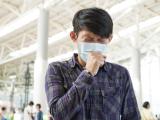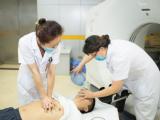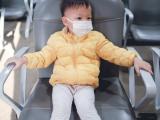Apr 17, 2003 (CIDRAP News) – Federal health officials said today that only 35 people in the United States have "probable" cases of severe acute respiratory syndrome (SARS), a small fraction of the 208 suspected cases under investigation.
Only 35 US cases match the World Health Organization's (WHO's) definition of a probable SARS case, which includes pneumonia or acute respiratory distress syndrome, the Centers for Disease Control and Prevention (CDC) reported.
CDC has used a broader SARS case definition than the WHO in an effort to catch all possible cases. But now the agency will begin distinguishing between probable and suspected cases so that its reports to the WHO will be consistent with the reports from other countries, officials said.
"We use the broader case definition and will continue to use it for epidemiologic purposes in this country because we want to cast the widest possible net," CDC Director Julie Gerberding, MD, said at a news briefing today. She said the CDC recognized that it was creating some confusion by reporting numbers of suspected cases instead of probable cases.
In the Apr 18 issue of Morbidity and Mortality Weekly Report, CDC states, "Many suspected SARS patients in the United States have had relatively mild illness and have not required hospitalization or chest radiographs. The majority of these reported patients are not likely to have the novel coronavirus infection, as respiratory illness is common in travelers." WHO announced yesterday that, as suspected for weeks, SARS is definitely caused by a previously unknown coronavirus.
The MMWR report says that 19 of the 208 probable or suspected SARS patients in the United States have no history of recent travel to China, Hong Kong, Singapore, or Hanoi, but all reported close contact with a SARS patient who had traveled to affected areas. All but two patients in the "probable" category had traveled to those areas. Only one patient has required mechanical ventilation.
Ten patients have tested negative for the SARS virus in the acute phase of illness, the report says. But Gerberding said, "With the tests we have right now, until we know more about the sensitivity of the tests, we're going to be very loathe to say that someone doesn't have SARS." She said a polymerase chain reaction (PCR) test under development is sensitive enough to detect very tiny amounts of viral material, but its specificity is in question.
Dr. James Hughes, director of CDC's National Center for Infectious Diseases, said CDC hopes to make the PCR test available to the Laboratory Response Network (which includes state laboratories) within about 2 weeks. But Gerberding predicted it will be considerably longer before a diagnostic test is available for clinical decisions, as distinct from epidemiologic investigations.
Food and Drug Administration (FDA) approval is necessary for new clinical diagnostic tests, she noted. CDC is working with the FDA to develop a diagnostic testing protocol that the FDA could approve, she said. "We don't want to be in a position where we make a mistake medically with a test that may not be reliable enough to use with individual patients," she said.
In other SARS developments, a Dutch researcher speaking at a WHO news briefing in Geneva, Switzerland, yesterday offered some details on the experiment that confirmed that SARS is caused by a new coronavirus. Dr. Albert Osterhaus of Erasmus University in Rotterdam said the experiment involved infecting monkeys with either the novel coronavirus or the human metapneumovirus, a paramyxovirus that was previously suspected of causing SARS. A third group of monkeys was infected first with the coronavirus and later with the metapneumovirus, he said, as quoted in a transcript published by WHO.
The monkeys infected with the coronavirus "developed SARS, they developed clinical symptoms, and they also devloped the pathological lesions that are identical to what we have seen in people who hav died from SARS," Osterhaus said. The monkeys exposed to the metapneumovirus developed only a mild rhinitis, and the third group of monkeys did not get sicker after being infected with the metapneumovirus, he said.
Osterhaus said investigators "cannot formally exclude" the possibility that other pathogens could aggravate a coronavirus infection, but the available data "quite strongly show that the coronavirus is the primary cause of this disease."
Also at the WHO briefing, Dr. Klaus Stohr, WHO's SARS etiology coordinator, said the recently deciphered genetic blueprint of the SARS virus is already being used in research to develop a vaccine. "One practical application is that part of the sequence of the virus . . . is now being put into insect cells," he said. The insect cells reproduce part of the virus, and the hope is that this viral fragment could eventually be used to induce a human immune response that would prevent SARS, he said.
WHO today reported 96 new cases of SARS, increasing the global cumulative total to 3,389, including 165 deaths. Hong Kong had 29 new cases and the rest of China had 25, bringing their respective totals to 1,297 and 1,457. Canada had 23 new cases, for a total of 126. Outbreaks have been reported in 26 countries (counting Hong Kong as part of China).
At the WHO briefing yesterday, officials said WHO experts in Beijing estimated that there are 100 to 200 probable SARS cases in the city, far more than Chinese authorities have reported. Those include at least 50 patients in a military hospital that WHO officials visited, said Dr. David Heymann, executive director of WHO's communicable diseases programs. He added that there may be up to 1,000 people under observation for SARS in Beijing, though many may not have the disease.
"It's our impression that China needs to get clear on how it reports these diseases," Heymann said.
In Hong Kong today, health officials said they concluded that sewage spread the SARS virus through Block E of the Amoy Gardens apartment complex after an infected man who had diarrhea visited there in mid-March, according to an Associated Press report. Health Secretary Yeoh Eng-kiong said malfunctioning seals between a sewage drain and water pipes allowed the virus to spread, and fans apparently helped draw virus particles into apartments. The report said 324 residents of the building contracted SARS.
At the WHO briefing, Heymann said diarrhea is a common SARS symptom, affecting about 10% of patients worldwide.
See also:
MMWR report
http://www.cdc.gov/mmwr/preview/mmwrhtml/mm5215a2.htm



















